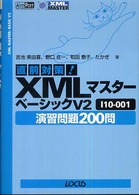Full Description
"A fresh new approach that strengthens the need for teaching with creative thinking strategies for administrative leadership teams. Few textbooks have such detailed examples combined with the background study of best practices. The authors have great credibility, experience, resources, and abundant research to support their proposal. A very well-written text offering ample review of the research."
—Sara E. Spruce, Professor of Education
Olivet Nazarene University
Use this research-based instructional model to meet students' achievement goals!
As the achievement gap between advantaged and disadvantaged students gets wider, teachers and administrators need a proven process to help all students meet the requirements of NCLB. This practitioner-friendly guidebook provides a step-by-step approach to a complete standards-based curriculum and the integration of best practices into the delivery and assessment of instruction in every classroom.
The authors present three capacity-building features of the design process: (1) training for building leadership teams to help teachers plan and lead the reform process, (2) stewardship training to assist district administrators and principals in supporting and sustaining the implemented reforms, and (3) a collaborative observation process to help teachers work together and in partnership with principals to monitor and improve classroom instruction.
Offering an education model that has been field-tested with more than 50 school districts in the U.S. and Canada, this book shows school leaders how to maximize collaborative observation and other team leadership processes to integrate reforms into a school's existing culture. Educators will learn ways to:
Integrate instructional design with successful instructional reform
Strengthen the learning culture through standards
Develop effective performance indicators
Apply curriculum mapping to instructional design
Designing Instruction supports teachers and administrators working together to raise student achievement by using proven instructional design and best practices.
Contents
Acknowledgments
About the Authors
Introduction
Our Journey Through School Reform
Enter Instructional Design
The Purpose for This Book
The Five Parts
Who Should Buy This Book
Part I. School Reform Is All About What Happens in the Classroom
1. Instructional Design as the Catalyst for Successful School Reform
The Eight Core Elements of Successful School Reform
How Does Instructional Design Integrate With Successful School Reform?
Three-Year Time Frame
2. Performance Indicators: The Passkey to Standards-Based Curriculum
What's in the Name?
The Criteria for Valid Performance Indicators
How the Standards Are Organized
Not Classroom Ready, but That's Okay
Using Standards to Strengthen the Learning Culture and Increase Expectations
The Process of Developing Performance Indicators
Frequently Asked Questions and Related Issues
What to Do During the Pilot of Performance Indicators
"Are We There Yet?"
Summary
Part II. Planning
3. Curriculum Mapping
Not a New Concept
Features and Physical Layout of the Curriculum Map
The Instructional Design Aproach to Curriculum Mapping
Teacher-Administrator Accountability
Frequently Asked Questions About the Curriculum Mapping Process
Ensuring a Successful Rollout of the Curriculum Maps
The Three-Year Time Frame
4. Unit Planning: Rationale and Format
Introduction
The Unit Plan Format for Instructional Design
Considerations in Developing Unit Plans
Frequently Asked Questions About Unit Plans
The Three-Year Time Frame
Part III. Best Practices in Unit Planning and Delivery
5. Unit Planning: Motivation and Information
Introduction
Motivation
Information
Bloom's Taxonomy
Summary
6. Unit Planning: Learning Constructs
Introduction
Organizational Patterns
Writing Summary
Note Taking
Math-Problem Analysis and Problem Solving
Vocabulary and Context Clues
Graphic Organizers
Levels of Questioning
Similarities and Differences
Summary
7. Unit Planning: Delivery Strategies
Introduction
Lecture or Explanation
Demonstration
Guided Discussion
Inquiry, or Formulating and Testing Hypotheses
Learning Circles
Socratic Seminar
Action Research
Advance Organizer
Summary
Part IV. Assessment
8. Unit Planning: Assessment and Culmination
Introduction
Assessment
Culmination
Summary
Part V. Capacity-Building
9. Capacity-Building to Integrate Classroom Reform Into the Deep Culture of Each School
Introduction
Benchmarking
How the Data Should Be Used by Teachers and Administrators
Building Leadership Teams
Administrative Stewardship
Collaborative Observations
Summary
Appendix A: Ohio Summary of Results
Appendix B: River Bend Local Schools
Appendix C: Various Methods to Determine Mastery of Performance Indicators
Selcted References
Index








